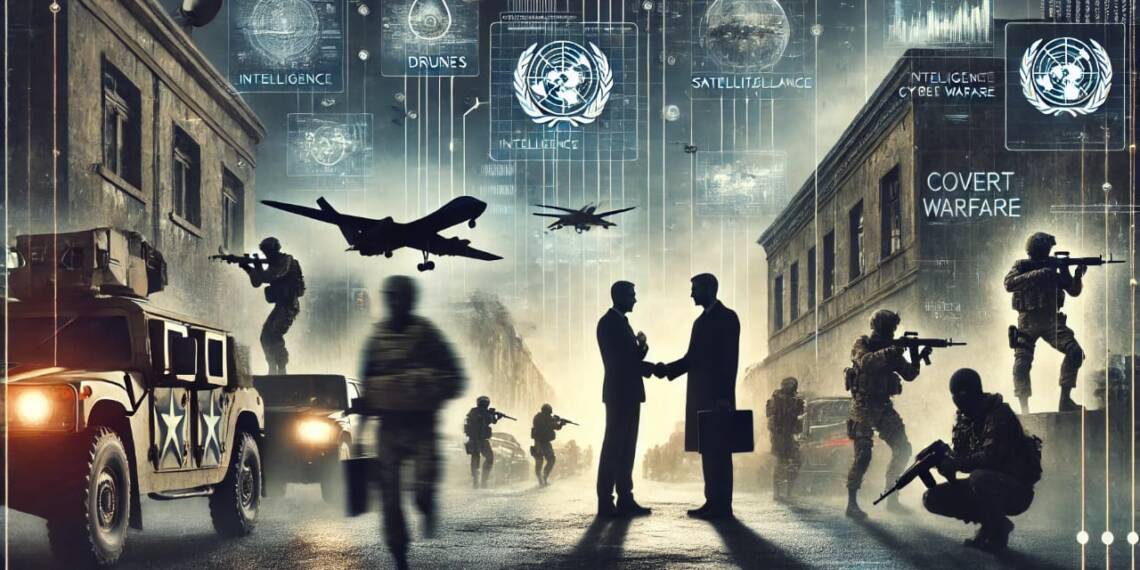The conclusion of the Cold War in 1991 precipitated a dramatic shift in global conflict dynamics, marking a transition from traditional open warfare to more covert forms of conflict, including cross-border skirmishes, insurgencies, and separatist violence. The bipolar world order that had kept global tensions in check began to fragment, leading to a surge in conflicts where hostile neighbors, previously deterred by the threat of superpower intervention, now felt emboldened to settle scores.
The Cold War era’s intense geopolitical rivalry between the United States and the Soviet Union had created a tense division of influence, suppressing many regional conflicts and keeping them from escalating. However, with the dissolution of the Soviet Union, many of these latent hostilities erupted into violence, often fueled by external actors and covert operations rather than traditional, open military confrontations.
This period also saw the rise of terrorism as a key instrument in proxy wars. The same dynamics that spurred regional conflicts and insurgencies also gave rise to a new form of asymmetric warfare, where non-state actors and extremist groups began using terrorism to achieve political objectives. A notable example of this was the rise of Al-Qaeda, which became a central player in the global landscape of terrorism following the end of the Cold War.
Remarkably, Afghanistan—where the Soviet Union faced its own protracted and ultimately disastrous conflict—also became the epicenter for the rise of Al-Qaeda. In 1996, Mullah Omar, the leader of the Taliban regime in Afghanistan, provided sanctuary to Osama bin Laden, the founder of Al-Qaeda. This decision had far-reaching consequences, culminating in the September 11, 2001, attacks on the United States. These attacks marked a significant escalation in the use of terrorism as a means of waging covert warfare, exemplifying the shift to proxy conflicts that relied on militant groups rather than traditional state militaries.
The concept of proxy wars, or asymmetric warfare, has since become a defining feature of contemporary conflicts. In the Ukraine-Russia conflict, for instance, Russia’s 2022 intervention in Ukraine was described by President Vladimir Putin as a “special operation” rather than a war, reflecting a reluctance to openly acknowledge a full-scale conflict. The response from the US-led NATO was to provide military support to Ukraine while avoiding direct troop involvement, thus keeping the conflict within a proxy framework.
Similarly, the recent military offensive by Israel in Gaza was triggered by a covert Hamas attack on October 7, which involved terrorism as a method of initiating conflict. Hamas, which has evolved from an affiliate of the Muslim Brotherhood into a radical Islamist group, views its struggle with Israel as a religious war rather than a mere political dispute. This has led to significant regional and global repercussions, including increased tension between Iran and Israel, as well as heightened proxy support.
The rise of drone warfare, especially following the Ukraine-Russia conflict, has further intensified cross-border proxy wars. The proliferation of drone technology, notably from Iran to various state and non-state actors, has introduced new dynamics to modern conflicts. For instance, Pakistan has been using Chinese drones to conduct covert operations against India, reflecting the broader trend of using advanced technology to extend the reach of proxy conflicts.
The end of the Cold War set the stage for a new era of covert conflicts characterized by insurgencies, terrorism, and proxy wars. This shift has led to prolonged and complex global and regional conflicts, where traditional notions of warfare are increasingly replaced by asymmetrical and covert strategies. The ongoing geopolitical tensions, exemplified by the Ukraine-Russia conflict, the Israel-Gaza violence, and the proliferation of drone warfare, underscore the need for careful management of these evolving threats.








